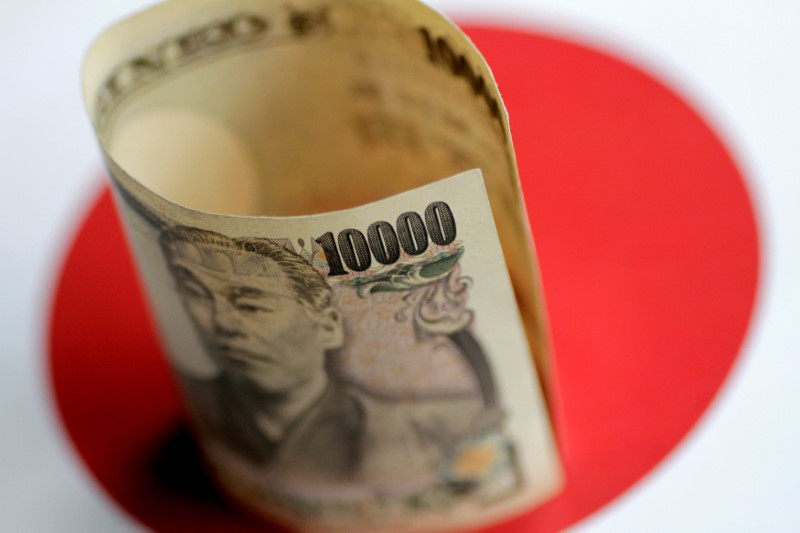 © Reuters. FILE PHOTO: Illustration photo of a Japan Yen note
© Reuters. FILE PHOTO: Illustration photo of a Japan Yen noteTOKYO (Reuters) – Japan’s government will push back its timeframe for achieving a balanced budget by five years to fiscal 2025 but set an interim target to review progress in getting the country’s fiscal house in order, the newspaper reported on Wednesday.
The interim target would require the government to spur growth while curbing the burgeoning social welfare cost of a rapidly ageing population, underscoring the challenge premier Shinzo Abe faces in sustaining the economic recovery and market confidence over Japan’s handling of its finances.
Japan had originally aimed to achieve a budget surplus in fiscal 2020. But Abe shelved that deadline last year when he called a snap election with a pledge to revamp social welfare system for all generations.
Under a new deadline to be set in June, the government will aim to achieve a surplus in the primary budget — which excludes debt servicing and new bond sales — by the fiscal year ending in March 2026, the Nikkei said.
Its interim goal, with a deadline of fiscal 2021, will aim to achieve three targets: cutting the ratio of debt to gross domestic product (GDP) to around 180 percent, the budget deficit to 1.5 percent of GDP, and the ratio of fiscal deficit to GDP to 3 percent or lower, according to a draft seen by Nikkei.
The targets would not be too ambitious and would allow Abe to ramp up fiscal spending to ease the pain on the economy from a scheduled hike in the sales tax next year, the Nikkei said.
The fiscal deficit target would also keep pressure on the Bank of Japan to maintain its ultra-loose monetary policy, as higher interest rates would lead to bigger deficits, it said.
The International Monetary Fund has warned of the need for Japan to work out a long-term plan to get its finances in order, as the country is already saddled with the heaviest public debt among major industrialized nations.
But analysts say Abe’s government has put fiscal reform on the back burner as he focuses more on growth than austerity to revive the economy and restore public finances.
Investors are closely watching the government’s plans to balance the budget for clues on how willing Abe could be in ramping up fiscal spending to counter an expected shock from next year’s sales tax hike.
Projections by the Cabinet Office showed in January that a primary budget surplus will be met in fiscal 2027, meaning that spending reform would be needed to bring forward the target.
But the government is already laying the groundwork for substantial increases in welfare spending in next fiscal year’s budget to subside education and childcare costs, highlighting the difficulty of restoring fiscal health.
Fusion Media or anyone involved with Fusion Media will not accept any liability for loss or damage as a result of reliance on the information including data, quotes, charts and buy/sell signals contained within this website. Please be fully informed regarding the risks and costs associated with trading the financial markets, it is one of the riskiest investment forms possible.
Source: Investing.com






























